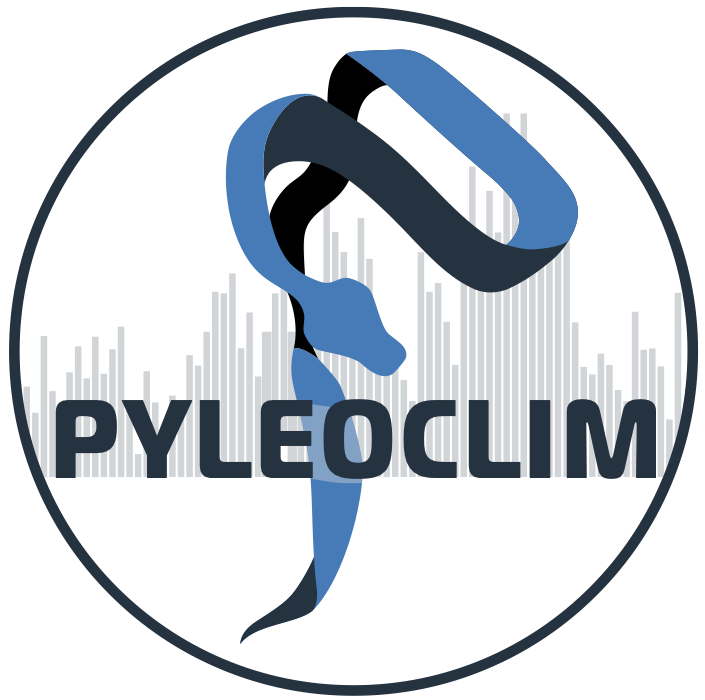PyleoTutorials: A Gentle Introduction to the Pyleoclim Package.#
A collection of science-driven tutorials for using the Pyleoclim Python package.
Contributors#
Made with contrib.rocks.
Contents#
The notebooks are organized in three levels:
Getting Started: basic tutorials to understand the main classes and their uses, requiring minimal knowledge of Python
Manipulating Data and Graphics: more advanced tutorials involving customization and more knowledge of Python
Data Analysis with Pyleoclim: tutorials involving more advanced data analysis techniques, requiring some domain knowledge to apply and interpret properly.
Getting Started
Manipulating Data and Graphics
How to run these notebooks#
Using myBinder#
myBinder allows you to run the notebooks in a no-install cloud container. The top right corner of each tutorial has a spaceship icon that will launch a myBinder instance of each notebook. Until recently, myBinder was supported by the Google Open Source Program Office, which is now being abandoned. This means that starting up a myBinder instance to run one of our notebooks swill be even slower than before (as in: possibly waiting forever). Until that is resolved, myBinder may not be a practical solution.
Local installation#
You may also download each notebook and run them with a local install of the conda environment. To do so, the best is to use the environment.yml file with conda to install the required packages within an anaconda or miniconda installation. Once you’ve cloned our repository, open a terminal, navigate to a folder containing environment.yml , then run the command :
conda env create -f environment.yml
This will install all the required packages and their dependencies. It may take a few minutes the first time, but after that you will have the power of Pyleoclim and allied packages at your local disposal.
If you are new to conda, just know that it is an environment manager for Python. What is an environment, you may ask? Think of it as a piece of your computer where all the Python libraries that you need for a specific application live in perfect harmony. To access this paradise, you need to activate the environment. If you used the environment.yml file:
conda activate pyleo
Using the LinkedEarth JupyterHub#
If you have access to a decent internet connection and do not want to install Python and Pyleoclim on your machine, you can also run these (and your own) notebooks on the LinkedEarth JupyterHub. To do so, please contact LinkedEarth to obtain an account, which may take 1-2 business days to review. Use of the LinkedEarth Hub implies that you subscribe to the LinkedEarth code of conduct which pretty much amounts to being a decent human being. This is a good solution if you intend on using Pyleoclim in your own work, particularly for paleoclimate data-model comparisons.
If you choose this route, know that the PyleoTutorials notebooks will not be directly pulled to the hub (unlike the myBinder solution). You will first need to download, clone or fork this repository onto your local machine. You can do so by clicking on the green ‘code’ button at the top of the repository page (right above the list of files):

To learn more about cloning/forking, see this post. Downloading is just a one time action.
Once the notebooks and data are on your local machine, you can upload them to your private instance on the hub using this tutorial.
Please note that the notebooks use specific paths that you will either need to correct in the cells or reproduce on the hub (i.e., the notebooks and data folders).
Whichever path you choose, happy Pyleocliming, and please consider joining our user community on Discourse. It is the best place to provide feedback on any of this, and make requests for new tutorials.
Acknowledgements#
This work was supported by NSF Grant ICER 2126510.


